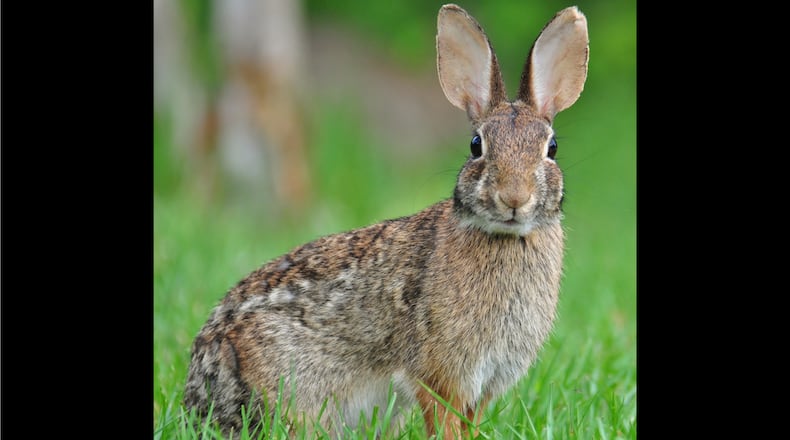It’s hard to imagine Easter baskets without chocolate bunnies, like those that countless kids will get on Sunday. The Easter Bunny and the chocolate rabbit have long been symbols of the Christian holiday — and of spring in general.
No one knows for sure how rabbits gained that image, but scholars believe it’s due to the animals’ prolific breeding and prodigious fertility.
That’s certainly true of the Eastern cottontail, the model for the Easter Bunny and the most common, widespread rabbit of Georgia’s four rabbit species. Its name comes from the bright spot under its short tail that, when raised, may confuse predators.
An Eastern cottontail produces as many as seven litters a year between early February and late September, with 80% of the young born from April to July. Male cottontails are polygamous, meaning that they may have more than one mate at a time.
As many as nine 1-ounce baby cottontails are born blind and naked in a ground nest, usually a depression lined with dry grass, plant fibers and fur that the mother pulls from her breast. The babies grow so quickly that they are covered with their own fur and able to leave the nest after about two weeks.
Though not as widespread as the Eastern cottontail, Georgia’s three other rabbit species — swamp rabbit, marsh rabbit and Appalachian cottontail — also are fertile breeders. The males of all three species also are polygamous.
The swamp rabbit, a strong swimmer and Georgia’s largest rabbit, lives mainly in the Piedmont. It produces two to five litters a year with one to six babies in each.
The reddish-brown marsh rabbit, which occurs mostly in the Coastal Plain and along the coast, has two to four litters a year; litter sizes range from two to five offspring.
As its name implies, the Appalachian cottontail, the state’s least common rabbit, is mostly limited to northeast Georgia’s mountains, where it hides out in mountain laurel thickets. It produces three to four litters a year with three to eight babies in each.
IN THE SKY: From David Dundee, Tellus Science Museum astronomer: The moon will be last quarter on Sunday. Mars is low in the southwest at dark and sets in the west a few hours later. Jupiter and Saturn rise in the east just after midnight. Saturn will appear near the moon on Monday night and Jupiter will do so on Tuesday night.
Charles Seabrook can be reached at charles.seabrook@yahoo.com.
About the Author
The Latest
Featured


